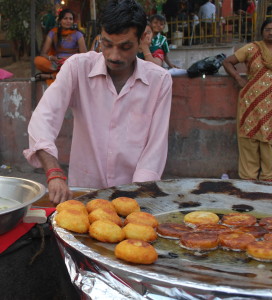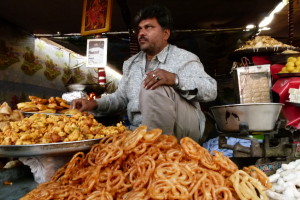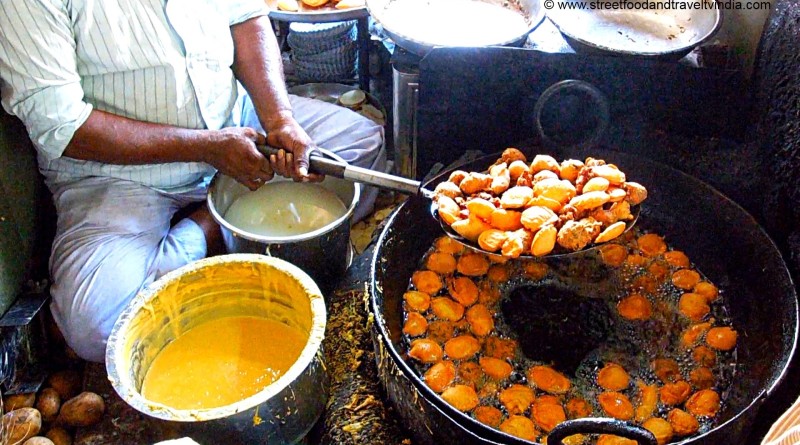Life at Stake
Unsafe food poses grave health threats, endangering everyone. Sadly, food safety has been a long neglected issue in India.
By Dr Neelam Mohan
As per a report released by the WHO (World Health Organization), unsafe food poses global health threats, endangering everyone. Monosodium glutamate, commonly known as MSG, is used as a flavour-enhancing agent in many kinds of food products. But it can result in toxicity, if found beyond the safety limits.
In the recent past, the inspection of “Maggi” noodles in different batches suggested levels of lead above the limits specified by food regulators. This sensationalizedthe entire country. However, what is important for us is to realize that it’s not just one company or one product, but such controversies are cropping up with several products. It’s time that the Government, manufacturers, retailers, and the public realize the importance for food safety in India.
 Children are more prone to lead poisoning; their smaller bodies are in a continuous stage of growth and development. Lead is absorbed at a faster rate in children compared to adults, which causes more physical harm than to older people. Furthermore, toddlers and young children, especially as they are learning to crawl and walk, are constantly on the floor. They are more prone to ingesting and inhaling dust that is contaminated with lead. The unsafe toys with high lead level and paints are a major threat to children.
Children are more prone to lead poisoning; their smaller bodies are in a continuous stage of growth and development. Lead is absorbed at a faster rate in children compared to adults, which causes more physical harm than to older people. Furthermore, toddlers and young children, especially as they are learning to crawl and walk, are constantly on the floor. They are more prone to ingesting and inhaling dust that is contaminated with lead. The unsafe toys with high lead level and paints are a major threat to children.
The classic signs and symptoms in children are loss of appetite, abdominal pain, vomiting, weight loss, constipation, anaemia, kidney failure, irritability, lethargy, learning disabilities and behavioural problems. Slow development of normal childhood behaviours, such as talking and use of words, and permanent intellectual disability are both commonly seen. Although less common, it is possible for fingernails to develop leukonychia.
 The Food Safety and Standards Authority of India (FSSAI) was established in India in 2006, which is supposed to consolidate the various Acts and orders related to food safety and regulate their manufacture, storage, distribution, sale and import to ensure the availability of safe food for human consumption in India. The FSSAI was thus created to assist the government in framing the regulations to lay down the standards and guidelines in relation to articles of food, guidelines for certification of food safety management and accreditation of laboratories and notification of the accredited laboratories. Besides the above, it has to provide scientific advice and technical support to the Government in framing the policy and rules. It provides training programmes for persons who are involved in food businesses and contributes to the development of international technical standards for food safety.
The Food Safety and Standards Authority of India (FSSAI) was established in India in 2006, which is supposed to consolidate the various Acts and orders related to food safety and regulate their manufacture, storage, distribution, sale and import to ensure the availability of safe food for human consumption in India. The FSSAI was thus created to assist the government in framing the regulations to lay down the standards and guidelines in relation to articles of food, guidelines for certification of food safety management and accreditation of laboratories and notification of the accredited laboratories. Besides the above, it has to provide scientific advice and technical support to the Government in framing the policy and rules. It provides training programmes for persons who are involved in food businesses and contributes to the development of international technical standards for food safety.
The Ministry of Health & Family Welfare, Government of India is the administrative ministry for the implementation of FSSAI. The food borne illnesses could be secondary to infections caused by bacteria, viruses, parasites or due to chemical substances which enter the body through contaminated food and water. The common bacterial infections that are seen due to contaminated food and water are Salmonella, Campylobacter, Escherichia coli and Cholera. These could lead to various symptoms ranging from fever, headache, nausea, vomiting, abdominal pain, diarrhoea, dehydration and could occasionally be life threatening. Besides the bacterial infections several viruses like norovirus and parasites like cryptosporidium, endamoebahistolytica, giardia or ascaris, could also result from contaminated food and water.
The commonly talked about toxins are naturally occurring toxins such as mycotoxins (aflatoxin ) or organic pollutants due to contamination of industrial waste in water such as dioxins which affect the immune system, interfere with hormones and cause cancer. The poisonous effect of heavy metals such as lead, cadmium,mercury could result through pollution of air, water and soil.Some chemicals such as monosodium glutamate can also result in toxicity if they exceed the safety limit of the dose specified.
So, unsafe food poses global health threats, endangering everyone. Infants, young children, pregnant women, and elderly and those with an underlying illness are particularly vulnerable to them. Foodborne and waterborne diarrhoeal disease kill an estimated 2 million people annually, including many children. India contributes to a significant proportion of these deaths.
 Early symptoms of lead poisoning includes loss of appetite, abdominal pain, nausea, diarrhoea, constipation, muscles pain, tingling sensation in the extremities and sleep problems. They could even lead to kidney failure, memory loss, reproductive problems and serious neurological symptoms such as wrist and foot drops and encephalopathy, and cancer if exposed to abnormally high lead concentration.
Early symptoms of lead poisoning includes loss of appetite, abdominal pain, nausea, diarrhoea, constipation, muscles pain, tingling sensation in the extremities and sleep problems. They could even lead to kidney failure, memory loss, reproductive problems and serious neurological symptoms such as wrist and foot drops and encephalopathy, and cancer if exposed to abnormally high lead concentration.
The current reference range of acceptable blood lead concentrations in healthy person without excessive exposure to environmental sources of lead is less than 5µg/dL for children and less than 25 µg/dL for adults. Monosodium glutamate, commonly known as MSG, is used as a flavour enhancing agent, in many kinds of food products. It is more commonly used in Chinese food products. In the past; there were some anecdotal reports indicating glutamate leading to symptoms such as numbness, weakness and palpitation, popularly called as the ‘Chinese-restaurant-syndrome’.
Monosodium glutamate is a salt of glutamic acid which is one of the 20 amino acids making up proteins. It is not an essential amino acid suggesting that it is not manufactured in our body. Only free glutamate plays an important role in food flavour. The amount of glutamate used in foods is usually within the range of 0.1% to 0.8% of the food as it is served. This is similar to levels of naturally occurring glutamate found in traditional dishes.
However, when monosodium glutamate exceeds the safety limits then it results in various symptoms such as headaches, asthma attacks, dizziness and other neurological symptoms. The proper labelling is important to avoid excessive use of these products. It is the time that the Government of India, manufacturers, distributors and public get aware of the above-mentioned facts and the various norms led by WHO and FSSAI are implemented on an urgent basis.
(The author is Director, Department of Paediatric Gastroenterology, Hepatology and Liver Transplantation at the Medanta Hospital,Gurgaon)



